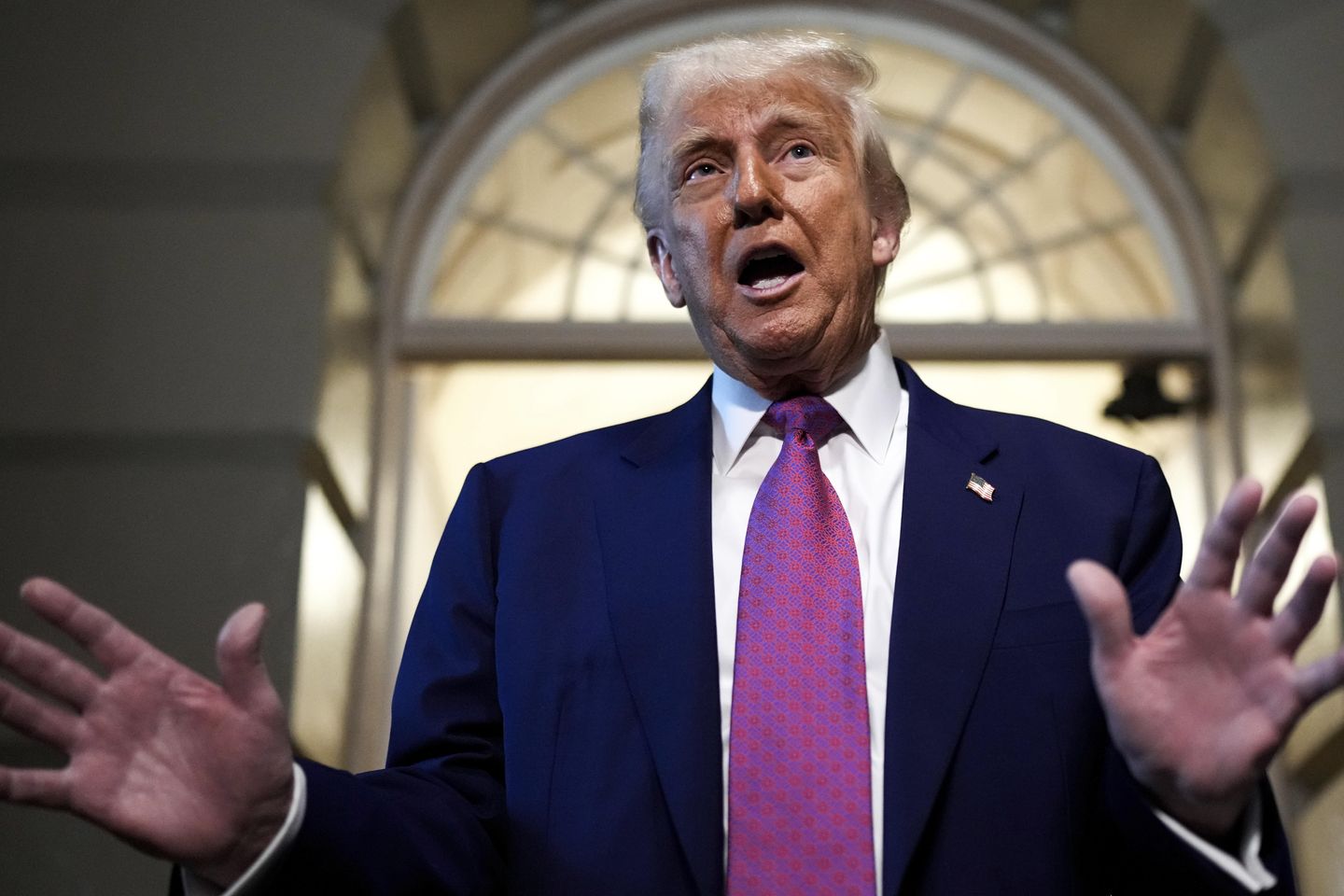
President Trump has selected the architecture for his ambitious “Golden Dome” missile shield, and he said that Space Force Vice Chief of Space Operations Gen. Michael A. Guetlein will oversee the effort to get it up and running.
Speaking in the Oval Office on Tuesday, Mr. Trump said the Golden Dome will be completed before he leaves office and will complete a vision for national missile defense that dates back to the Reagan era.
Mr. Trump and Defense Secretary Pete Hegseth described an “open architecture” approach that will involve multiple defense companies, from traditional leaders in the sector to new players from Silicon Valley.
Mr. Trump said the Golden Dome will integrate cutting-edge space-based interceptors with existing missile defense capabilities, likely including Terminal High Altitude Area Defense, or THAAD, anti-ballistic missile defense batteries.
“The design for the Golden Dome will integrate with our existing defense capabilities and should be fully operational before the end of my term, so we’ll have it done in about three years,” the president said.
“Once fully constructed, the Golden Dome will be capable of intercepting missiles even if they’re launched from the other side of the world and even if they are launched from space. And we will have the best system ever built,” he said.
Mr. Hegseth described a “layered defense” system, including space-based interceptors and ground-based missile defense tools, meaning the U.S. would have multiple shots at any incoming missile.
Some defense industry leaders have also said the system should include sea-based assets off both coasts and in the Gulf of America, adding an additional layer of projection in strategically important locations.
The defense chief gave a nod to what is expected to be the most technologically advanced missile defense system ever constructed. Mr. Hegseth said he envisions a system in which numerous capabilities “can speak to each other.”
That would seem to suggest that artificial intelligence and autonomous systems will help drive the groundbreaking network of satellites, sensors, interceptors, and other assets that will make up the Golden Dome.
Mr. Trump said his spending package, currently making its way through Congress, includes an initial $25 billion for the project. He said he expects it to cost $175 billion, though outside analysts have said the project will be much more expensive.
It’s difficult to know exactly how much the project will cost over time, given the necessary and potentially costly upgrades and maintenance.
The Golden Dome aims to protect the entire continental U.S. from ballistic and hypersonic missile strikes, including potential strikes from China and Russia, both of which have highly advanced missile programs.
China is expected to expand its arsenal of 600 hypersonic missiles to as many as 4,000 by 2035, according to U.S. government estimates. Russia is expected to have 1,000 hypersonic weapons within a decade.
Gamechanger for missile defense
Speaking alongside Mr. Trump, Gen. Guetlein laid out his view of why the Golden Dome is necessary.
“While we have been focused on keeping the peace overseas, our adversaries have been quickly modernizing their nuclear forces, building out ballistic missiles capable of hosting multiple nuclear warheads, building out hypersonic missiles capable of attacking the United States within an hour and traveling at 6,000 miles an hour, building cruise missiles threat can navigate around our radar and our defenses, building submarines that can sneak up on our shores, and worse yet, building space weapons,” he said.
“It is time we change that equation and start doubling down on protection of the homeland,” the general said.
Gen. Guetlein, whose new title is the “direct reporting program manager” for the Golden Dome, will have a monumental task before him. Building the Golden Dome will require cooperation and input from across the federal government, from the Space Force to the Missile Defense Agency and combatant commands across the Pentagon.
He’ll also have to navigate an acquisition and procurement structure that critics say is too slow to handle a project of this scale, scope and complexity.
Key lawmakers praised Tuesday’s announcement but acknowledged the challenges that lie ahead.
“We cannot maintain deterrence without space superiority and an improved ability to conduct air and missile defense. Gen. Guetlein has his work cut out for him, but I am confident he is the right person for the job,” Sen. Roger Wicker, Mississippi Republican and chairman of the Senate Armed Services Committee, said in a statement.
Swelling support
The Golden Dome initiative garnered significant support in Congress and across the defense industry in the weeks leading up to Tuesday’s announcement.
At a major event last week hosted by the Washington Times’ Threat Status, Sen. Tim Sheehy, Montana Republican, announced the formation of a Golden Dome caucus in the Senate to advocate for the project.
Mr. Sheehy was joined at the event by Sen. Deb Fischer, Nebraska Republican and chair of the Senate Armed Services Subcommittee on Strategic Forces.
Ms. Fischer said that the moment is ripe for the kind of major missile shield investment that will fundamentally transform the way America protects itself — especially as adversaries such as China and Russia make rapid advances in their own missile programs.
“For the last 40 years, we have found ourselves in a cycle where every 20 years or so, we prioritize homeland missile defense, make progress and then slide back into a new status quo,” she said. “Under the current Trump administration, we have the opportunity to make a generational leap forward in missile defense through the Golden Dome program.”
Some of the biggest questions moving forward will center on which companies are tapped to build out the project.
Reuters reported last month that Elon Musk’s rocket and satellite company SpaceX, along with software maker Palantir and drone builder Anduril, had emerged as frontrunners among some members of Mr. Trump’s national security team in the competition for Golden Dome contracts.
Industry sources have also cited a range of other emergent defense tech companies as potential players as the push for the next generation missile defense shield evolves.
But some of the biggest defense contractors, including companies such as Lockheed Martin and others, are also expected to play major roles.












